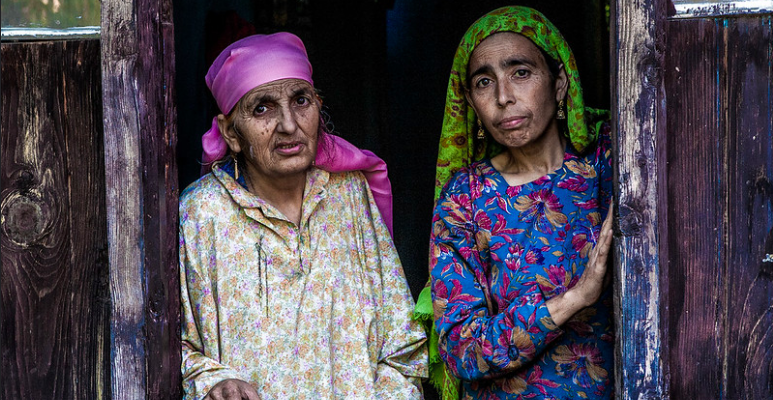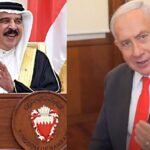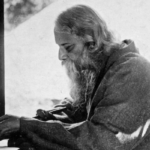The decision to include Kashmiri, Dogri and Hindi in the list of officially accepted state languages in Jammu and Kashmir does not promote inclusivity, as has been projected.
In fact, it uses language as a political tool to further widen the gap that has been polarising identities in an otherwise abundantly diverse ‘state’ for a long time now. Much has been said about the exclusion of Pahari, Punjabi and Gojri from that list.
In 1991, the Gujjars and Bakerwals were granted Scheduled Tribe status among others from a reviewed list of ethnicities forwarded to the Central government, that included Paharis as well. But Paharis were left out of the ST list and since then, they have actively pursued demands for reservation based on their similarity with the Gujjars, when it comes to lifestyle, topography and distinct language and other socio-cultural parameters on which Gujjars were chosen.
In fact, since the 1970s, the community has been raising its demands through various state-level civil society organisations like Jammu & Kashmir Pahari Cultural and Welfare Forum (JKPCWF), Jammu and Kashmir Pahari people’s Movement (JKPPM), Jammu and Kashmir Pahari Students Welfare Association, All Jammu & Kashmir Pahari Speaking Youth Forum (PSYF) and so on.
Also read: Why the Centre’s Bill on Official Languages in J&K Is Facing Opposition
The distinct ethnic groups of Paharis, Gujjars and Bakerwals have been mutually co-exiting in harmony despite the presence of the obvious socio-political faultlines such as the reservation conundrum as discussed by Zaffar-Choudhary.
As someone who is writing from the Pahari heartland of Poonch-Rajouri belt, the opposition’s counter move of naming those languages that have been left out will not work. This is simply because the memory of the grant of 4% direct reservation for the Paharis under the same NDA government, not very long ago, in the days after the reading down of Article 370, is still fresh.
Thus, the grant of the reservation on one hand and the non-inclusion of the language on the other hints at how identities are mobilised for political gains. But the blame of politicising identities does not fall on the NDA alone.
As someone with Pahari ethnicity, one never hesitates to ask how have the developmental policies coming from the government so far uplifted and benefited the Paharis?
Paharis in Jammu and Kashmir, unlike the predominant understanding of Paharis as the people who reside in the mountains, are an ethno-linguistic group.
Also read: Centre’s New Rules for J&K Undermine the Power of Any Future Elected Government
They speak Pahari dialect, a sub-group of Pothowari-set of languages largely spoken across the Pothowar-plateau. But in order to understand the inclusion and thus the representation of Pahari as an important part of Jammu and Kashmir’s diversity, we need to first analyse how has this particular diversity has been excluded and ignored by the state and the Centre equally since Partition.
The mention of the word ‘Partition’ is important, as counting Pahari as merely an important part of the diversity in the ‘state’ will not do. Understanding the geographical location of the ethnic-group vis a vis the demographics in the state is crucial here. When the ceasefire-line (present day LoC) bisected the erstwhile princely state of Jammu and Kashmir in January 1949, the areas with majority Pahari-population bled the most.
 For reasons yet to be explored, the ceasefire line while cutting across Mirpur, Kotli, Poonch and Muzafarrabad unleashed havoc in these Pahari heartlands, and it was the same Pahari ethnicity that was the worst affected by the communal carnage that took place between October, 1947, and January, 1949, when the ceasefire was declared by UN intervention.
For reasons yet to be explored, the ceasefire line while cutting across Mirpur, Kotli, Poonch and Muzafarrabad unleashed havoc in these Pahari heartlands, and it was the same Pahari ethnicity that was the worst affected by the communal carnage that took place between October, 1947, and January, 1949, when the ceasefire was declared by UN intervention.
Since those times, these bisected lands have been experiencing violence on an everyday basis because of the politics that rendered them as contested-frontiers of a disputed state.
The regions where Pahari population is in majority lie as the borderland-districts of the erstwhile state apart from other regions such as Doda, Kishtawar, Kupwara, where a substantial amount of Pahari population can be found. In the twin borderland districts of Poonch and Rajouri, the Paharis are above 50% of the population.
Uri, a border tehsil in Baramullah district is perhaps the only pocket left in the valley where minority Hindus and Sikhs are concentrated in large numbers. This is so because Uri is also the only tehsil in the valley with majority Pahari population concentrated in one place. Its neighbouring areas such as Karnah are again important Pahari settlements.
If we take a look at the map, we shall see the Uri-Poonch-Rajouri-axis. The Pahari heartlands are actually the peripheral borderland spaces situated along the Line of Control.
Another important feature is that Paharis, unlike the other ethnicities they cohabit with, such as Gujjars and Bakerwals, are a multi-religious-ethnic-group. The inference one can draw here thus is that Paharis, despite dwelling in hostile geographies of the state that face conflict and cross-border violence as the frontiers, are also an ethnic-group who have preserved the plurality, syncretism and communal harmony, and all this in a region where due to continuous polarisation, identities have been drifting further apart instead of coming closer.
Paharis thus stand out between a dominant Dogra identity in Jammu and a distinct one in the Kashmiri valley, and teaches both of them and the rest of India how to harmoniously coexist in some of the world most hostile geographies. Mani Shankar Aiyar’s column on his visit to Poonch understands this borderland as a ‘religiously-plural’ zone paramount to communal-harmony in the conflict-ridden state of Jammu and Kashmir.
What a politics based on language does is that it tries to reassert identities with an agenda to hegemonise their cultural-representation, thereby creating division and rift, where one identity is pitched against the other.
The politicisation of language is thus anathema to the cohesive role a language plays in a social sphere. Language binds diversities through inter-community civic ties and allows them to mutually accept each other by taking pride in each other’s difference. Ashutosh Varshney’s work is relevant here.
Pahari in Jammu and Kashmir has always been the symbol of diversity that has existed in mutual cultural exchange. Poonch, a borderland with around 60% of its population speaking Pahari, has Gojri and Kashmiri speaking population as well, and each of these languages have flourished here through co-existence and sharing.
Also read: Dreaming of Peace Dividends: Revival of Shimla-Murree Linkages
A few hamlets of Kashmiri-speaking population largely in Mandi tehsil of Poonch district are well conversant in Pahari and use Pahari as their lingua franca just as much as they use Kashmiri.
These are identities that have treated language as ‘ethno-geographic’ asset, meaning that they adopted a local culture and language without endangering their own. In fact an ethno-geographic-linguistic category goes beyond ‘adoption’, it exists as a rich identity that lives on a plural set of identities and takes pride in each of them.
Identity building is layered and complex in such a case. How does one break the promotion of Dogri, Hindi and Kashmiri to such a rich strata of people?
The ongoing reassertion of identities on religious lines in response to the larger politics of religious nationalism in India and in South Asia at large, is already a threat to the plural nature of these ethnic identities.
Reasserting identities based on languages such as Hindi and Punjabi is a trend finding ground in these borderlands as well as I have argued in depth in an earlier paper. Thus, creating cultural hegemony using language shall hit hard at the plural nature of these diversities that lie outside the already dominant and politically mobilised identities in Jammu and Srinagar. While representing Jammu as a Dogri-Hindi belt pitched against an Urdu-Kashmiri valley, we are dong irreversible damage to the rich Pahari pockets that have always existed as melting bowls of syncretic cultures.
Also read: Kashmiri: Let Not Religion Divide What Language Unites
Instigating difference and othering in Hindu, Muslim and Sikh Paharis through such a dangerous politics of language can be detrimental to these last existing multi-religious pockets of harmony.
Regional politics has led to the sudden demand for reclaiming diversity of the state through the call for the inclusion of Pahari or Gojri. But the socio-economic backwardness and underdevelopment of these borderlands regions speak for themselves.
Instead of developing these peripheral spaces, the regional administration neglected them those identities battling violence and underdevelopment there were not part of the mainstream in Jammu and Kashmir.
These regions have always existed as ‘shadow communities’, and a mere survey on representation of Paharis in the socio-cultural capital and in important portfolios in any elected state government shall reveal this.
But let us keep that for another day. Despite being a victim of the politics of identity, Paharis have been able to hold on to their religious diversity even while dwelling in shelling zones. The aim should be to develop models out of them for the rest of the communally driven identities to emulate.
Malvika Sharma is a Research Fellow at the Centre for the Study of Social Systems, Jawaharlal Nehru University, New Delhi. Her areas of interest are identity, ethnicity and nationalism, and borderland studies.




